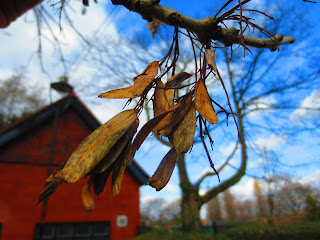Thursday, 8 August 2013
Common yew (Taxus Baccata)
Yew is is very long lived ( to 2,000 years) with dark green, evergreen, flattened needles which are usually poisonous to cattle. Yew is widespread in central eruope.
Bark; reddish and flaking
Leaves; flattened needles, dark green
Fruit; poisonous pinkish red, cup shaped and resembles a berry
Thursday, 21 March 2013
Hazel ( Corylus Avellana )
Hazel is a deciduous tree native to the northern hemisphere. They have simple, rounded leaves with double-serrate margins. The nuts of all hazels are edible. The common hazel is the species most extensively grown for its nuts. This species was found in Longford park.
Scotts Pine ( Pinus Sylvestris )
Pinus sylvestris is an evergreen coniferous tree growing up to 35 m in height.The bark is thick, scaly dark grey-brown on the lower trunk, and thin, flaky and orange on the upper trunk and branches.The shoots are light brown, with a spirally arranged scale-like pattern. The seed cones are red at pollination, then pale brown, globose and 4–8 mm diameter. This pine was found in Longford park.
European Ash ( Fraxinus Excelsior )
Ash occurs on a wide range of soil types, but is particularly associated with basic soils on calcareous substrates.It is a large deciduous tree growing to 20–35 m (exceptionally to 46 m) tall with a trunk up to 2 m (exceptionally to 3.5 m) diameter, with a tall, domed crown. The bark is smooth and pale grey on young trees, becoming thick and vertically fissured on old trees.European Ash rarely exceeds 250 years of age. However there are numerous ones estimated between 200 and 250 years old and there are a couple over 250. The largest is in Clapton Court, England and is 9 m (29 ft) in girth. There are several examples over 4.5 metres (15 feet) in Derbyshire alone. this ash was found in Longford Park.
Silver Birch ( Betula Petula )
They are typically rather short-lived pioneer species widespread in the Northern Hemisphere.Birch species are generally small to medium-sized trees or shrubs, mostly of temperate climates.The fruit is a small samara, although the wings may be obscure in some species.Birches often form even-aged stands on light, well-drained, particularly acidic soils.This birch was fond in longford park.
Subscribe to:
Posts (Atom)






































